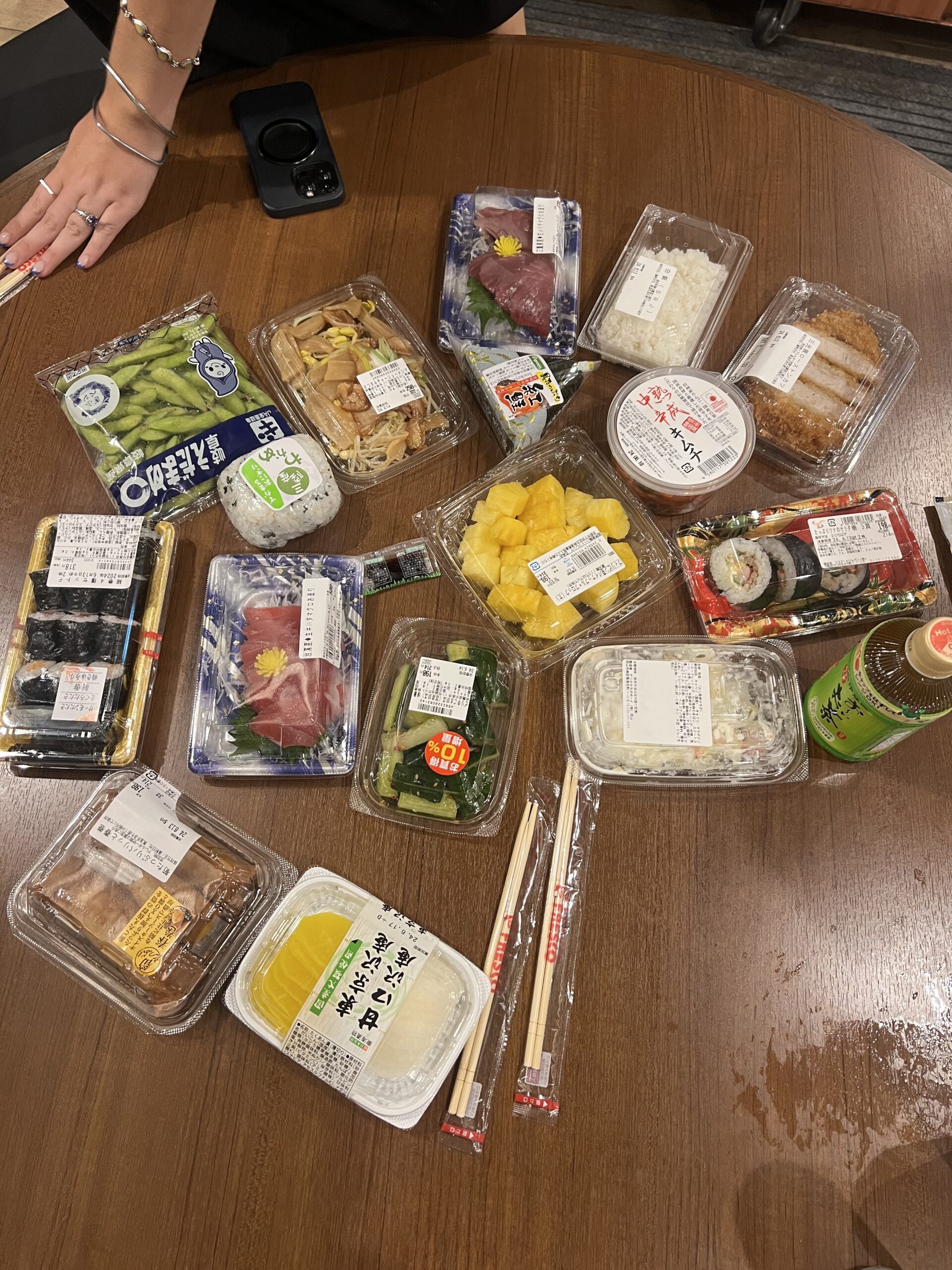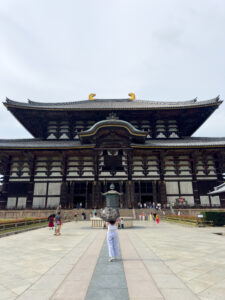
A delicious and fresh food haul from a local grocery store in Kyoto, totaling less than $30 USD.
In the busy streets of Kyoto, grocery stores offer a captivating glimpse into the city’s culinary culture, blending tradition with modern convenience.
Nestled alongside historic temples and bustling neighborhoods, these stores are not only a hub for necessities, but also a reflection of Kyoto’s commitment to sustainability and quality. From the packaged produce to enticing arrays of fresh seafood and vibrant seasonal items, each aisle promises a journey through Japan’s culinary heritage. Amidst it all, there is a focus on allergy friendly options to ensure inclusivity, making Kyoto’s grocery scene a haven for both locals and tourists alike.
In Kyoto, grocery stores are a vital part of daily life, often found scattered throughout residential neighborhoods and near major transportation hubs. Locals visit these stores multiple times a week, sometimes daily, to pick up fresh ingredients for meals at home.
Unlike the enormous stores commonly found in the United States, Kyoto’s grocery stores are generally smaller, emphasizing efficiency and convenience. There are different types of grocery stores, like specialty stores for just meat or packaged foods. It’s not always a one-stop shop. These stores are filled with items ranging from locally sourced produce to essential household items. They’re usually within walking distance from any area which is super helpful when you’re on the move, or staying somewhere close to one and need something yummy to eat.
Over the past couple of months, the Japanese yen has generally been weaker compared to the U.S. dollar. This means that the relative value of the yen is much less as compared with the U.S. dollar. The exchange rate changes daily, but $10 USD is about 1,600 yen. As a result, prices of items, like at grocery stores, are more inexpensive than they would be in the United States.
In Kyoto, grocery store prices generally reflect a lower cost compared to those in the United States. Fresh produce and seafood, staple of Japanese cuisine, are usually locally sourced and tend to be priced reasonably.
Also, due to Japan’s emphasis on quality and freshness, everything from sushi to fruit is absolutely delicious. As an example, sushi in the United States may not have as high of quality fish but could range from $8 to $15. In Japan, you can get better quality for as low as $3. Additionally, Japanese grocery stores often prioritize presentation and freshness with frequent restocking ensuring products are at their peak when purchased.
Grocery stores in Kyoto are conscientious about handling allergies, with their fresh food items and packaged goods. Fresh food sections often provide clear labeling and signage indicating common allergens such as nuts, gluten and seafood.
Packaged items typically feature detailed ingredient lists and allergen warnings, allowing consumers to make informed choices.
In the SJMC Japan group, if there was an allergy problem, Google Translate was also an amazing and helpful tool to help with that extra peace of mind. It was also easy to ask grocery store employees if there’s a certain ingredient you cannot have. They were usually knowledgeable on different items.
Overall, Kyoto grocery stores prioritize customer safety and transparency regarding allergens, maintaining high standards of food handling and labeling to accommodate diverse dietary requirements.
Kyoto’s many grocery stores feed their communities, attract tourists with tasty products and are a hub for neighborhoods throughout the city.
Delicious, affordable, and quality foods are just a short distance from where ever you are in Kyoto!







